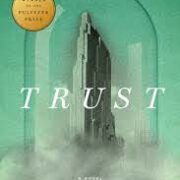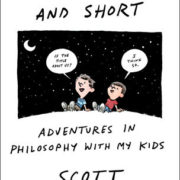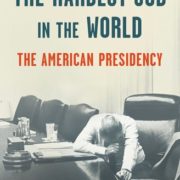Challenger: A True Story of Heroism and Disaster on the Edge of Space by Adam Higginbotham
January 28, 1986, was the day NASA’s carefully cultivated image literally blew up at 46,000 feet. If you are of a certain age, you probably recall where you were when you heard the news. That morning, the space shuttle Challenger exploded just 73 seconds after launch, killing all seven crew members. The inquiry that followed revealed that in order to meet its frenetic launch schedules, NASA officials were willing to overlook known problems with the shuttle’s reusable solid rocket boosters. In Challenger: A True Story of Heroism and Disaster on the Edge of Space, Adam Higginbotham unpacks the story with methodical detail. It’s chilling because in reading the preceding engineering and managerial decisions, you know you are also reading the anatomy of a future catastrophe.
Tragedy is nothing new in NASA’s storied history of course, with Higginbotham taking us back to the deaths of the Apollo 1 crew during a lauchpad test. Going forward, astronaut trainees were required to listen to the audio of the crew members imploring that they be released from the command module because they were burning to death. Higginbotham also revisits how a fickle public became rather blasé with repeated moon landings, with some complaining to television networks that their favorite programs were being interrupted with yet more moon-landing footage.
Funding NASA has always been fraught, regardless of the space program. When the space agency decided to pursue flying a reusable space plane with reusable solid rocket boosters, the new astronaut class was preparing to fly missions under the very real possibility that the new shuttle program would not come to fruition. Cost overruns and delays continually tested Congress’ patience.
If you’re a space dork (like me), you’ll devour reading about the interregnum period between the Apollo and Space Shuttle programs. The focus changed from swaggering test pilots manning moon-shot rockets to research-based scientists conducting experiments in orbit. The test pilots still had their place, to be sure. Someone had to land an orbiter reentering as a glider. But gone were the days when Mercury astronauts enjoyed dollar-a-year leases on sports cars.
Nonetheless, as with any space program, defining “acceptable risk” is a necessity. Engineers didn’t really know if this new space plane/truck would survive reentry. And firing rockets with solid propellants may indeed save money, but it’s also exceptionally dangerous. Once lit, the rocket fires until it’s out of fuel. Higginbotham compares it to lighting a firework. When the various shuttles did eventually launch, the percussion waves were so pronounced and damaging, high-pressure streams of water were sprayed around the lauchpad to dampen the acoustics.
Thiokol, a private contractor based in Utah, designed and built the boosters. Given their massive size, they had to be built into segments for transportation. Once at Cape Canaveral, they were made vertical and sealed with rubber O-rings. After the boosters burned their fuel, they were released from the shuttle and then retrieved from the Atlantic Ocean. In the process of repurposing the rockets, Thiokol engineers discovered that the O-rings were less than reliable. If enough gas escaped from any given segment, the results would be catastrophic for the crew.
Higginbotham provides an in-depth history of the O-ring debacle. No internal memo or meeting escapes an airing. We know where this is heading of course, and it’s amazing the astronauts were never briefed on the suspect O-rings. As we winnow our way down to the January 1986 launch, we come across every frustrating misstep. There was extra publicity with this launch as one crew member was middle school teacher Christa McAuliffe. She was the first of NASA’s “teachernaut” program, a publicity effort to demonstrate the accessibility of space flight.
The unusually low air temps that week led to the unprecedented recommendation among Thiokol engineers to scrub the launch. The O-rings, they argued, would be compromised under such conditions. Administrators decided to fire the rockets anyway. Launch schedules had to be made and all eyes were on this launch in particular. On the morning of January 28, it looked as though it would be a successful booster firing, with the shuttle ascending as planned. But then at 11:39 A.M., it exploded in full view.
NASA originally reported that the crew was vaporized in the explosion. However, the wreckage pulled from the ocean revealed human remains. So it’s quite possible the crew was conscious as the orbiter plummeted to the ocean. After a dramatic investigation, changes were made with the booster rockets and space shuttle flights resumed. Still, make no mistake, there were deep rifts within NASA.
Throughout the book, Higginbotham gives us brief histories into the lives of the Challenger crew. President Reagan, along with his speechwriter Peggy Noonan, certainly did their part to humanize the first astronauts to perish during flight. In a public address just after the explosion, Reagan said, “We will never forget them, nor the last time we saw them, this morning, as they prepared for their journey and waved goodbye and slipped the surly bonds of earth to touch the face of God.” To Reagan’s credit, he understood that space exploration holds liminal space within our minds, and as such, during times of tragedy, words to describe what is almost indescribable matter.
Review by Jason Sullivan











